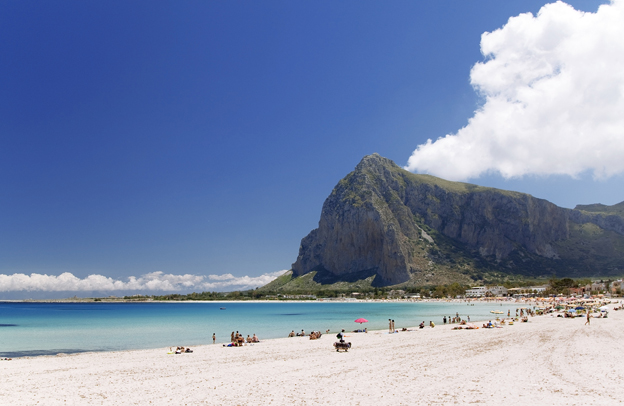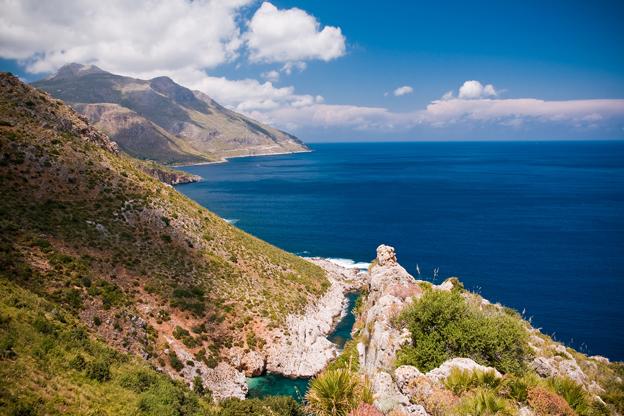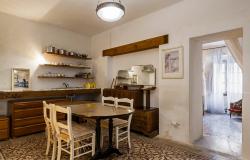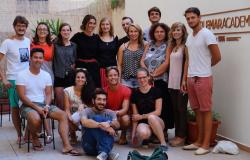[Photo above: Zingaro Nature Reserve]
If you wish to avoid Sicily’s crowded tourist hotspots, but still want to enjoy all that the island is famous for – a beautiful coastline, historic villages frozen in time, archeological sites, natural reserves, excellent cuisine – head west. Precisely, to the north-western tip of Sicily, where, on the same vacation, you can combine nature, history, culture and time at the beach.
Marsala, Sicily’s most westerly city, makes for a good base for exploring the area. Famous in Italian history as the landing site of Giuseppe Garibaldi’s Expedition of the Thousand on May 11, 1860, it is built on the ruins of the ancient Carthaginian city Lilybaion, and was later conquered by the Romans, who called it Lilybaeum (Lilibeo). Pedestrianized streets in the city center make for a pleasant stroll around, with many shops offering the typical Marsala wine. For an excellent aperitivo, stop at La Sirena Ubriaca, where you can taste local wines and delicious tartines with pistachio pesto sauce and other delicacies.
Just outside Marsala is the Stagnone Lagoon, a marine area famous for its salt ponds, and the archaeological site of Motya, on San Pantaleo island. Motya was founded by the Phoenicians at the end of the 8th century BC and soon became one of their most thriving towns thanks to its strategic position. The most significant remains from the Motya site are preserved in the Giuseppe Whitaker Museum. Take a boat tour of the lagoon (tickets can be purchased on site) - the best time of the day is near sunset, with the warm evening light reflecting on the water and its picturesque windmills. It is also a perfect time for stopping at the bar overlooking the Stagnone and enjoy aperitivo while admiring the view.

[Salt ponds and mills in the Stagnone Lagoon, near Motya]
Within an hour’s drive of Marsala is the Zingaro Nature Reserve, Sicily’s first established park. A top destination for those who love the outdoors and the sea, it is only accessible on foot along three trails that cross the reserve from end to end (north entrance at San Vito Lo Capo, south entrance at Scopello). The most popular trail is the coastal one: short detours lead you to gorgeous little coves with a transparent sea. (Bring lots of water with you!)
The trail in the upper part of the reserve is the most demanding, but rewards with spectacular views. On one end of the reserve is Scopello, worth a stop: a tiny village perched on a hill, a bunch of houses gathered around the 18th century baglio (the inner courtyard of traditional Sicilian country houses). Also worth a visit here is the Tonnara, tuna fishery 'headquarter', with the old warehouses on the bay and the fishermen’s cottages.
Proceeding north beyond the Zingaro Reserve, you will reach San Vito Lo Capo, on the northern tip of the promontory, famous for its beach and the annual Cous Cous Festival. The beautiful beach at San Vito, enclosed by mountains, can get very crowded during the summer months, so if you prefer somewhere more quiet, but just as beautiful, head to Santa Margherita Bay, on the western side of the promontory, with pearls like Isulidda and Calazza. The coast here is essentially rocky, so make sure you wear appropriate shoes.

[The beach at San Vito Lo Capo]
Another favorite destination in this part of Sicily is the borgo of Erice. For about 1,000 years, Erice was rich and powerful, a sacred city for five different civilizations (the Sicani, the Elimi, the Carthaginians, the Greeks and the Romans), thanks to an open-air temple dedicated to the goddess of love, which attracted people from all over the Mediterranean. Erice is located on top of Mount Erice, at around 750 meters (2,460 ft) above sea level, which makes for spectacular views over the city of Trapani, the coast towards Marsala, the dramatic Punta del Saraceno and Capo San Vito to the north-east, and the Aegadian Islands. The best way to explore the town is by leisurely strolling its narrow, at times steep, alleys. Make sure you taste the famous dolcetti di Erice, almond sweets which are said to be the best in Sicily, first created by the nuns of the local convents. Other famous sweets here are the genovesi (pastry filled with ricotta or crema) and the mostaccioli cookies. Maria Grammatico's pasticceria is the most famous pastry shop in town, as la signora Maria learned the art of making all these Sicilian delicacies directly from the nuns.

[Ancient fortresses in Erice]
Heading south from Marsala along the coast is Selinunte, Europe’s largest archeological site. Selinunte was one of the most important Greek colonies in Sicily, founded, according to the historian Thucydides, by an expedition from the city of Megara Hyblaea, north of Syracuse, around 651 BC. At its height, the city counted 170,000 inhabitants. The story of Selinunte ended in blood – in 409 BC, more than 1,500 boats carrying 100,000 soldiers disembarked upon the city and razed it to the ground. Selinunte would never recover and, after 150 years, was abandoned.

[Greek Temple in Selinunte]
Set in a bucolic landscape overlooking the sea, the fascinating site is divided into three areas: the temples of the eastern hill, indicated with letters because researchers do not know for sure to which gods they were dedicated. The most impressive is the doric-style Temple E, possibly dedicated to goddess Hera. It was rebuilt and re-erected in 1957. On the western hill is the acropolis, featuring civil and religious buildings, including temple C, the most ancient in Selinunte. North of the acropolis was the urban center. The third area features the sanctuary of Demetra Malophoros, goddess of fertility. Guided tours with carts taking you around the site (highly recommended) are offered throughout the day.
Finally, with so much to explore, make sure you also set aside some time to simply lie down and relax on one of the many beaches along the beautiful western coast of Sicily!












